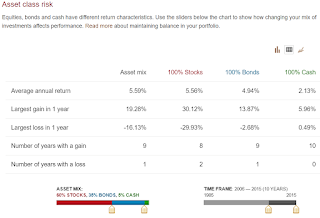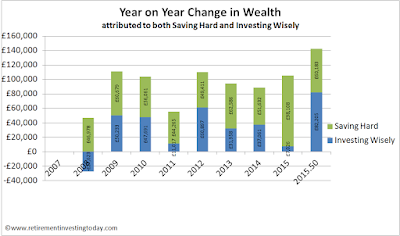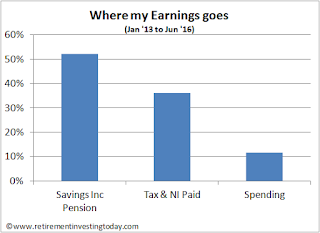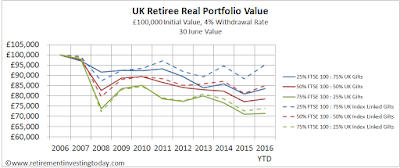My mature overall investing strategy is these days not much more complicated than a diversified collection of low expense, physical (as opposed to synthetic), income based (as opposed to accumulation) ETFs tracking enough indices to give me diversification across asset classes and countries held within low expense wrappers. While this is where my journey has left me, as the best strategy for me, I’ve tried a number of different things over the years that I’m either neutral on or negative to.
A negative, for example, are actively managed investment funds. As I’m negative on them I’ve done everything I can to move my investments away from them but even so I still have a couple that I can’t sell for tax reasons. A neutral is my UK High Yield Portfolio (HYP) which because I’m neutral on it now just sits passively amongst my portfolio doing its thing. It’s just completed its 5th calendar year and still contains a not insignificant £65,000 or so of my hard earned wealth.
Its original aim was to help me live off dividends only in FIRE and in that regard it’s still punching above its weight as it’s now only 6% of my total wealth but spins off 16% of my dividends.
My neutral approach mean changes to the HYP are now few and far between with changes for now only being forced by corporate events. In 2016 there was only one of these:
A negative, for example, are actively managed investment funds. As I’m negative on them I’ve done everything I can to move my investments away from them but even so I still have a couple that I can’t sell for tax reasons. A neutral is my UK High Yield Portfolio (HYP) which because I’m neutral on it now just sits passively amongst my portfolio doing its thing. It’s just completed its 5th calendar year and still contains a not insignificant £65,000 or so of my hard earned wealth.
Its original aim was to help me live off dividends only in FIRE and in that regard it’s still punching above its weight as it’s now only 6% of my total wealth but spins off 16% of my dividends.
My neutral approach mean changes to the HYP are now few and far between with changes for now only being forced by corporate events. In 2016 there was only one of these:
- Amlin. Bought on the 29 August 2014 with a forced sale on the 08 February 2016. AML provided me with a total return of 59% over a little less than 18 months of holding



















